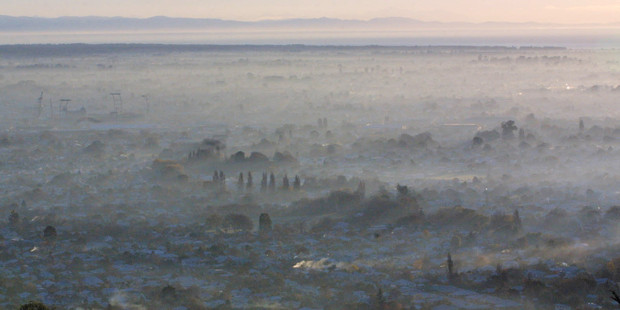
Clean and green NZ? Maybe not so much, according to a new global air quality report. Photo / APN
A new global report on air quality has featured 17 New Zealand centres among 1600 worldwide cities, with Timaru, Christchurch and Rotorua turning in the poorest national results for air pollution.
For New Zealand, the database measured PM10 - tiny particulate matter small enough to be inhaled into the deepest part of the lung - which is monitored in OECD countries because it can harm human health and reduce life expectancy.
In New Zealand, PM10 levels were 11.7 micrograms per cu m, much lower than the OECD average of 20.9 micrograms per cu m and much lower than the annual guideline limit of 20 micrograms per cu m set by the World Health Organisation.
But as the newly released report by the World Health Organisation showed, some centres had exceeded that level.
Timaru had a level of 28 (based on the 2011 record) while Christchurch had 23 (2011) Rotorua 20 (2012) Blenheim 19 (2012) and Dunedin 18 (2012).
Others singled out were Auckland, 15 (2012) Hastings, 15 (2012) Whangarei, 15 (2012) Napier, 14 (2012) Masterton, 14 (2012) Wellington, 13 (2012) Hamilton, 13 (2012), Taupo, 13 (2012) Porirua, 12 (2012), Wainuiomata, 10 (2012) Upper Hutt, 10 (2012) and Lower Hutt, 10 (2012).
The report came after a study last year by the University of Canterbury showed commuters in Auckland and Christchurch are exposed to levels of air pollution similar to those found in other large cities around the world.
That study showed that, compared to other countries, the air that commuters breathe while travelling was cleaner for carbon monoxide, but similar for fine particulates for some of the world's biggest cities.
It was especially significant as Auckland and Christchurch had comparatively less congestion and lower volumes of traffic than other large cities around the world.
Its results showed that those taking private cars were worse off than those who took public transport or cycled to work.
The WHO report, released overnight, showed more cities worldwide were monitoring outdoor air quality, reflecting growing recognition of air pollution's health risks.
But only 12 per cent of the people living in cities reporting on air quality resided in cities where this complies with WHO air quality guideline levels.
About half of the urban population being monitored was exposed to air pollution that is at least 2.5 times higher than the levels WHO recommends - putting those people at additional risk of serious, long-term health problems.
